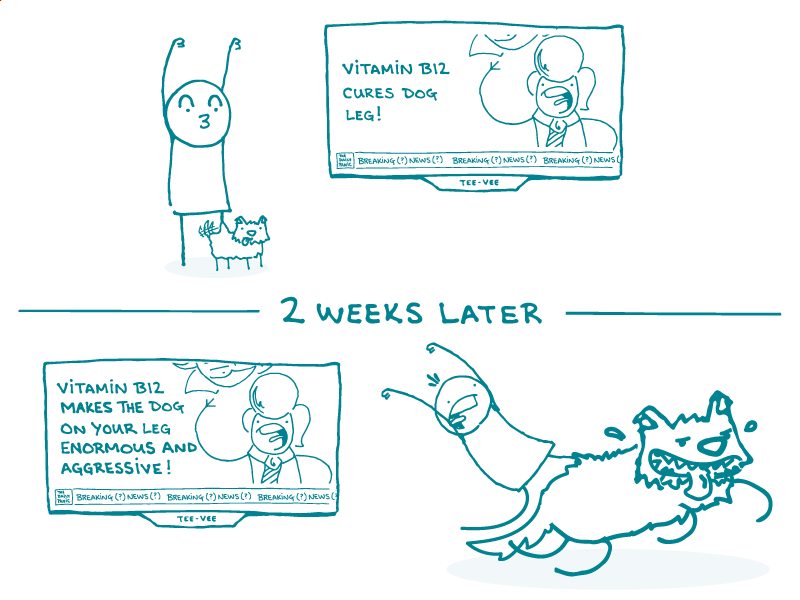
As health communicators, we help people find answers to all kinds of important health questions: When do I need to start getting mammograms? How can I eat healthier? Who needs a flu shot? And readers know these answers are trustworthy because we back them up with the best available evidence.
But what happens when new evidence overturns trusted health recommendations? We’ve all seen the flip-flopping news flashes on the healthiness of red wine and the endless back and forth on the dangers of red meat — but these 180s go way beyond food and drink choices.
For example, experts have recently been questioning the need for those familiar lead aprons during x-rays. In 2016, a review of clinical trials found that a commonly recommended knee surgery was actually useless. And back in 2002, researchers announced the dangers of then-widely-used hormone therapy during menopause… only to reverse course (again!) and re-recommend the therapy for many women.
These turnarounds can call into question the very concept of evidence-based health information. If the evidence is always shifting, one might wonder, how can we ever trust it enough to make good health decisions?
First, dear readers, a philosophical note. One way to look at this ever-shifting evidence landscape is that these reversals show the overall health of the system. Researchers need a healthy dose of skepticism to see the evidence clearly, and reevaluating published studies is part of the job.
And if you hear someone saying that their health advice is so sacrosanct that no evidence could ever disprove it, that means it was never evidence based to begin with!
Now for the practical part. Follow these tips to help your readers feel confident about their health decisions in the face of all these about-faces:
- Stick to (relatively) solid ground. One way to avoid retractions is to avoid publicizing shaky findings in the first place. So focus your materials on recommendations with a broad evidence base and skip flashy recs based on skimpy findings.
- Cite your sources. If you’re writing for consumers, linking to jargon-heavy journal articles isn’t the best way to instill confidence. Instead, cite the organization or agency behind the new recommendation (or non-recommendation), and offer a plain language explanation of the evidence that caused the shift.
- Be up front about what you don’t know. Sometimes we don’t have a definitive answer to a health question — and that’s okay! Just be honest with your readers. For example, rather than leading with what might cause a disease and leaving out the uncertainty, try starting with “experts aren’t sure what causes it.”
- Help your readers spot pseudoscience. New evidence that contradicts old evidence is one thing. A health claim based on no evidence at all is quite another! So do your part to arm people against bogus health baloney.
- Promote shared decision-making for tricky health choices. Even if you follow all these tips, your readers may not trust a recommendation that recently made a U-turn. And it can be hard for even the most media-savvy reader to tell fact from fiction on the internet. So encourage people to talk through thorny situations with their doctors — and use the best available evidence to make a decision together.
The bottom line: Help your readers navigate evolving evidence to make health decisions based on what we know — and what we don’t.
Browse recent posts